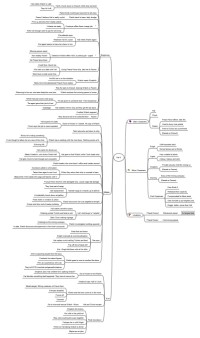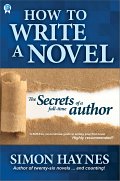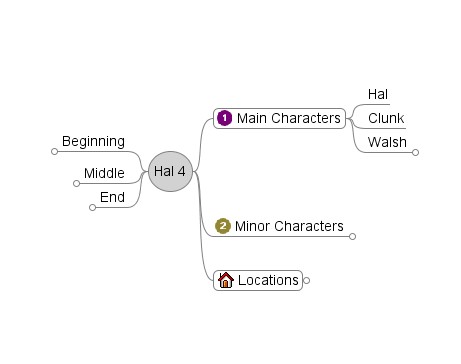How to plot your novel
Plotting is the process of describing your novel in summarised form, usually before you start the actual work of writing it. First, it can be very useful in the writing of your novel, especially when you start to lose your way. Second, it's much quicker to read, revise and rewrite a two page summary than a four hundred page novel. It's easier to spot flaws and it's easier to get an overview of the whole book.
So why doesn't every author write a plot outline?
I don't know about other authors, but I never liked plotting and I never enjoyed writing to a detailed outline. Once I'd spent days or weeks on the plot, writing the book was just like going to the movies and watching a film I'd seen ten or twelve times already. I knew what was coming, and frankly I found it quite boring.
What I used to do was map out a few scenes ahead of where I was writing and basically stumble along until I reached the end of my novel. That worked fine, except that I never knew how long a novel would take to write, and I'd end up with loads of dead ends and stray scenes. It was creative and spontaneous, yes, but it was also inefficient and very slow going.
After my first novel was accepted by a publisher I had to work with their editor to revise and improve it. She read my book and pointed out the flaws, as all good editors do, and also pointed out the bits which worked well. My job was to fix the flaws and make them more like the good bits.
At first I considered sitting down and rewriting the whole book, but then I realised she'd have to read the thing all over again, and would no doubt make another batch of suggestions (or even tell me the first version was better!)
So, instead of rewriting the book I wrote a detailed outline. It was very comprehensive - 14 pages long in the end - but it was short enough to read in a sitting. My editor commented on the outline, I made changes, and eventually we ended up with a document which we both thought would make a good novel.
So how do you write this outline? How do you create a plot in the first place?
I can't tell you how to come up with your story ideas and characters, although my article on
how to write a novel has some pointers. What I can tell you is that once you have the basic idea it's just a case of fleshing it out in more and more detail until you have a plot.
Let's use something really basic: A woman arrives home from work to discover her husband has been kidnapped. Unable to call in the police, she uses her initiative to trace his recent movements and discover who might have taken him - and why. Then she rescues him and they live happily ever after.
Freemind runs on Windows, Mac and Linux, and is free to use.
I'd put those three sentences down and label them 'beginning', 'middle' and 'end'. You can use paper, or a word processor, but I prefer to use Freemind. Start a new sheet, rename the central blob to the title of your book, then press Ins to add fields like Major and Minor characters and Locations on the right, and Beginning, Middle and End down the left. Now you can add sub-fields for your characters, and sub-fields under each character with notes. That should look something exactly like this:
Now fill in the plot points for beginning, middle and end. All nodes are collapsible which makes life easy when it comes to printing.
The thing is, your original beginning (
A woman arrives home from work to discover her husband has been kidnapped) can be expanded to include who she is, where she's coming home from, their personal situation (is it their wedding anniversary? A dinner date?), what she finds when she gets home, everything.
As you add these layers of detail, other ideas will come to you. But eventually you'll have a more detailed outline for your book. This image shows an early plot outline for my fourth novel:

Since I put this article online many people have written to ask whether they could download and inspect the FreeMind file I used to generate the image above.
I've now put this file online. Just download it, extract the mm file and load it into FreeMind. If you want to see how the finished novel turned out compared to the outline, see the
Hal Spacejock No Free Lunch page for links to the ebook and printed version.
This isn't the end, by any means. Most writers think about their work in progress throughout every day (and night!), scribbling notes on scraps of paper, work documents, the backs of envelopes and so on. Although not every idea will make it into the plot, they're all valuable. Sometimes one duff idea will generate two really good ones.
a Freemind file I prepared earlier - it's a basic outline you can download and add to.


